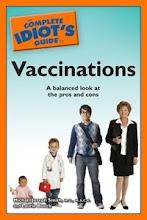Reaching people online is different from print or spoken communication for one main reason: you can use new media such as video, audio, and online links to make your communications richer and more realistic, even if what you create is not actually reality.
I'm not surprised that some people with autism spectrum disorders (ASDs) have been drawn to the virtual social world Second Life, for example. In Second Life, people with ASDs can communicate in ways that are not socially acceptable in the real world, incorporating unusual movements into their Second Life avatars, for example.
"The internet has been to the autistic community what sign language has been to the deaf community: a channel of communication that allows them to speak for themselves," explains the newscaster in a 2007 news clip on this phenomenon.
If modern life is sometimes awkward for those of us with passable social skills, it's surely maddening to people with ASDs who have trouble reading social cues such as facial expressions. Second Life is probably a welcome escape for many of them. Some therapists even use Second Life to help people with ASDs practice social skills necessary in the real world, explains T. DeAngelis in an article for the American Psychological Association:
With a therapist's guidance, patients enter a protected area in Second Life designed to help them practice communicating and negotiating in realistic settings. (The area - which is simply a location within the cyberworld - is secured so patients can't enter the main part of Second Life, which [cognitive neuroscientist Sandra Bond] Chapman believes could be overly confusing and disorienting for them.) As in Second Life, both patient and therapist create avatars, or virtual representations of themselves.Chapman was quite optimistic about the ability of moderated Second Life sessions to improve the social skills of her patients.
But the the technologies that help people with ASDs learn to navigate the real world also serve to degrade the social skills of people without ASDs. Laptops, smart phones, iPads, and other gadgets now create a wall between people who are stuck together in the same place - a doctor's waiting room, an airport - as each person retreats into their own technology bubble.
Do airports now have televisions in the waiting areas because people really need to keep up with CNN, or because we want to alleviate the awkwardness of sitting quietly among strangers, as we slowly lose our ability to make small talk - and perhaps discover new connections - with them? We turn to technologies such as foursquare to find out if any of our friends are in the neighborhood, instead of just looking up from the smart phone screen and looking around, hoping serendipity is on our side today.
So there it is. People with ASDs learn social skills for the real world by practicing them on Second Life, and people without ASDs lose some of their real-world social skills by spending too much time in cyberspace. Ultimately, will these two groups of people converge?



